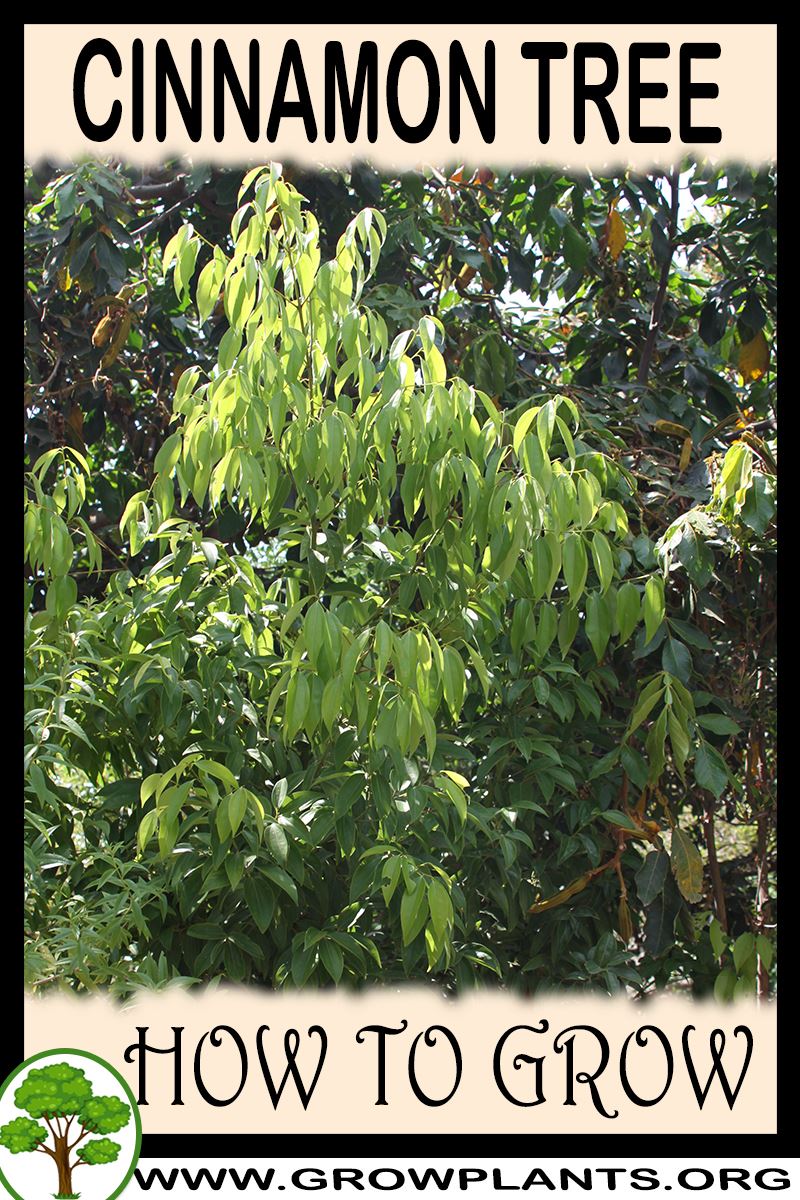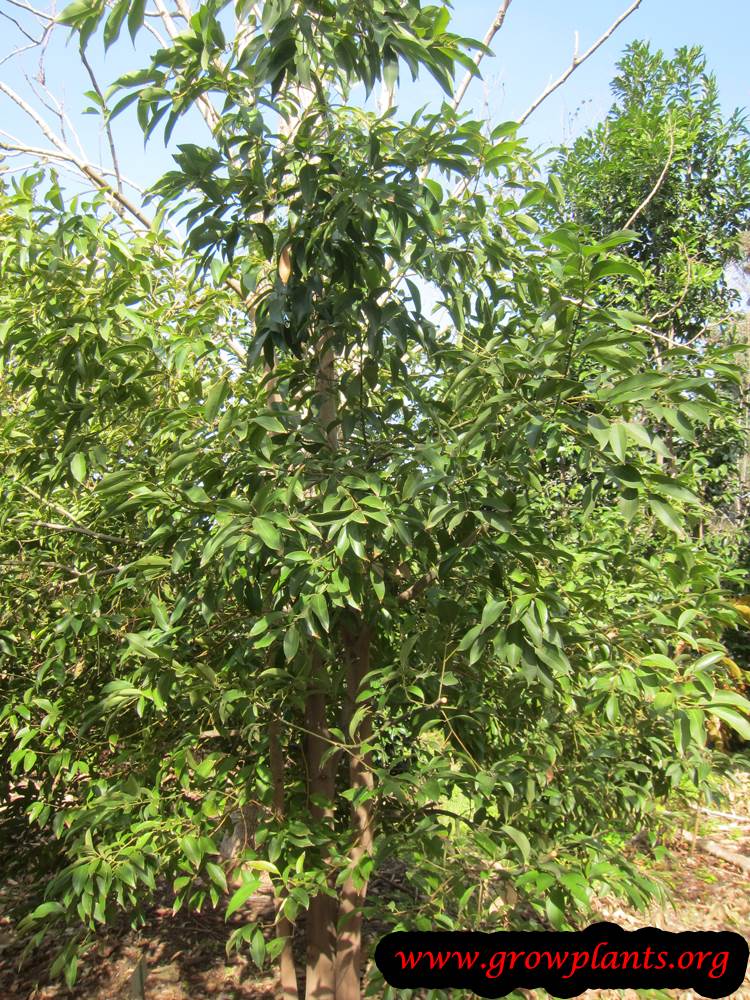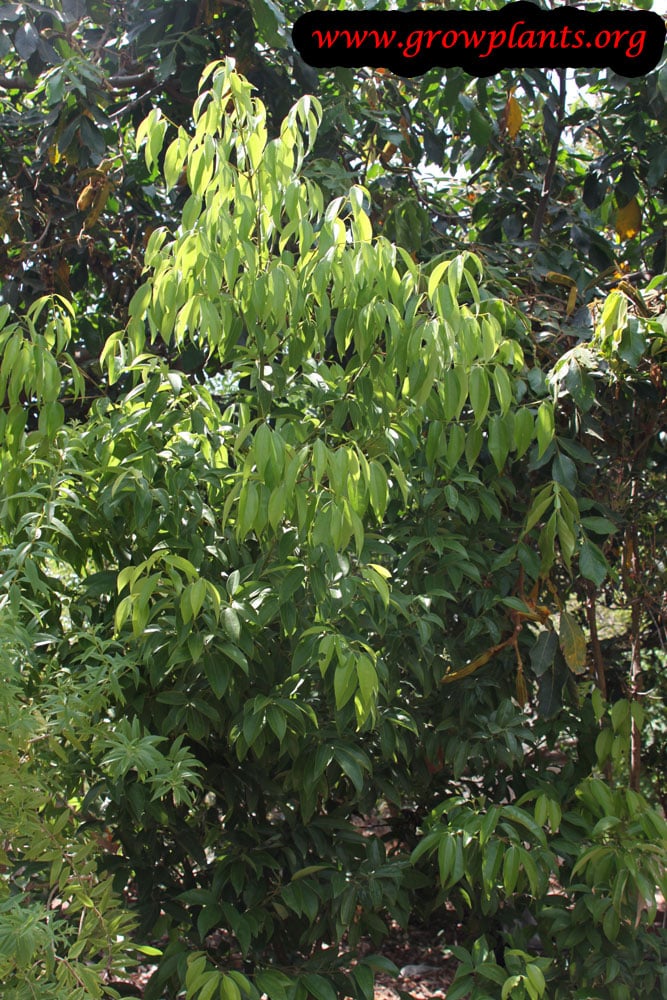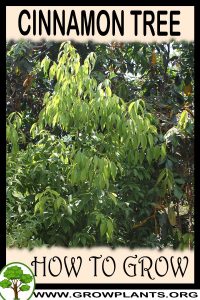
Cinnamon tree grow and care – tree of the genus Cinnamomum also known as Cinnamon plant, Cinnamon tree is perennial evergreen plant grow for the edible bark and leaves also used as ornamental plant for the fragrant and possible to grow as bonsai, can grow in tropics or subtropics or mediterranean climate and growing in hardiness zone 9+.
Cinnamon tree edible bark and leaves
Bark color brown mostly the useful part, the bark fall from the mature trunk sometimes needed help.
Leaves edible are can be used, flavor of the leaves or fragrant week, some species are stronger than the others, after a while from pick up the leaves the smell and the flavor almost gone.
Flowers small color yellow, the flowers grow on stalk in inflorescence
Cinnamon tree for sale – Seeds or Plants to Buy
How to grow Cinnamon tree – growing condition and care:
Warm climate, moist soil, mulch especially when the tree is young
How to care:
Add fertilizer once a year and when the tree is young better to fertilizer with high content of nitrogen, put mulch before the winter but when the tree young it’s important to put mulch to keep the soil moist
What is the best way to start growing?
Plant / Seed / Vegetative Reproduction propagating by cutting or air layer, propagation by cutting, when start from branch need to choose brown fully grown use hormones that fit for woody branches, need to keep high humidity, moist soil and if put it in close box need to ventilate air at least twice a day, watering by spraying and tale care don’t let it dry.
Is it necessary to graft or use vegetative reproduction?
No, but possible to start from cutting or air layer and when the plant get the right condition it is possible and it’s hard to start by cutting
Difficulties or problems when growing:
Some cultivars contain toxic (courmarin)
Planting season – when to plant:
Spring to autumn but in hardiness zone of 9 plant in spring, hardiness zone 10 spring to summer, hardiness zone 11 spring to autumn, hardiness zone 12+ all year
How to plant cinnamon tree:
Dig a hole bigger 30-50% than the roots ball, possible to cut little bit the roots depend the condition of the tree, cutting can help the tree to send new roots and establish better, put in the hole organic matter, humus and dead leaves and mix it with the soil, after this put the tree and cover lightly, if the tree need care support use bamboo or other kind of cane and cover the soil with mulch, if the tree is not stable consider to prune, water it twice in the first day and every day for two weeks.
Pests and diseases:
Aphids, brown spots
Pruning season:
Spring, summer, autumn
How to prune:
Week, dead branch, design in the plant with one or few main trunk it’s important for harvest because if will be a lot of little branches and not main trunk it will be hard to harvest and it will take more years.
Size of the plant:
4-20 m, 12-60 feet, Cinnamomum verum 10 to 15meters (32 to 49 feet), Cinnamomum cassia 10 to 15 meters (33 to 49 feet), Cinnamomum burmannii 8m (25 feet), Cinnamomum loureiroi 15 to 20meters (49 to 65 feet), Cinnamomum Tamala4-15 m (12-45 feet), Cinnamomum camphora 10-20 m, (30-60 feet).
Growth speed in optimal condition:
Medium growing / Slow growing
Water requirement:
Average amount of water – prefer regular amount of water with humidity and moist soil / Big amount of water
Light conditions in optimal condition for growing:
Full Sun / Half Shade
Is it possible to grow as houseplant indoor?
No, but possible to grow it indoor on the window with sun
Growing is also possible in a planter, flowerpot or containers:
Yes, start with small pot 20-30% bigger than the roots ball, every time that switch the container to bigger switch some of the soil to new soil until arrive to the desirable container size, after that every few years better to switch part of the soil and cut some roots, no need to take the plant out just from the side of the container, soil can be used potting soil or mixture of peat soil and perlite, water it regularly and care when put bottom for the pot be aware not to let the water stay there more than one day and do not over water it’s destroy the soil and the roots, it’s not like to grow outdoor overwater will destroy the soil, need to add hummus few time a year.
Blooming information
Bloom season?
Autumn / Winter / Spring
General information about the flower:
Small flower in yellow color
Pollination is done by:
Bees
Thinning the bloom:
There is no need in the blossom unless need seeds and as long as the tree young it’s better to cut the bloom stems
Edible leaves
Leaves harvesting season:
All year but in cold winter better not in the winter
How to harvest the leaves?
After tree establish root it doesn’t matter as long as you leave enough leaves on the tree
Information about leaves:
Light to dark green depend on the sun exposure , shiny oval leaves
Uses of Cinnamon leaves:
Beverage, fragrance, cooked, herb
Edible bark
When to harvest bark?
All year, but better in the spring
How to harvest bark?
After tree establish every year it’s possible to cut vertical line in the bark and wait until it disconnect from the tree, another option it’s to wait until the tree will take off the bark
Information about the bark:
Brown bark and it’s used after dry
Uses of the bark:
Beverage, fragrance, cooked, spice, herb
Vegetative Reproduction
How to make Vegetative Reproduction?
Cutting
The time for vegetative reproduction:
Spring / Summer
How much time does it take to grow roots in vegetative reproduction?
3-6 weeks, but can take much longer, as long as the branch still show sign of a live it’s still possible
What is the treatment for vegetative reproduction?
Moist, wet soil, half shade, high humidity, better to keep the plant in fog
How to grow Cinnamon tree from seeds
Sowing requirement:
Seeds are yellow with a brown bark, in the wild the seeds pass through the digestive of an animal, to simulate this situation rub the seeds and remove some of the bark, also recommend to sow in slightly acidic soil.
How to plant cinnamon seeds:
Dig hole bigger than the seeds cover lightly and better to cover it with vermiculite for better result
Saving seeds care until sowing:
Dry and dark place, room temperature
Sowing season:
Spring to summer in hardiness zone 9-10a, spring to autumn hardiness zone 10b-11, all year in hardiness zone 12+.
Plant spacing:
Potted in different pot, for plantation 4*5m (13*16 feet)
How deep to sow the seed?
1-2 cm (0.25-0.5inches) from the top
Seeding conditions:
Rich soil, moist, half shade
Watering the seeds:
Average amount of water
Germination time:
20-30 day but can be more than 4 months
Condition of the sprout:
Moist, mulch, high humidity
Do the seeds require burying?
No
Species
Cinnamomum verum (can also be found under the name of true Cinnamon tree, Ceylon cinnamon, Mexican cinnamon, Cinnamomum zeylanicum) is native from Sri Lanka but the tree grows for commercial purposes in Zanzibar, Egypt, Madagascar, Vietnam, Brazil and southern India. The tree grows in hardiness zone 10+. The tree is small 10 to 15meters (32 to 49 feet) tall. Among the Cinnamon cultivars, this variety is the most popular. Its taste is considered as the best, the finest but also the most expensive. Coumarin is a natural substance, widely used in perfumery, and especially in cinnamon. Coumarin is toxic to the liver (hepatotoxic), and can cause toxic hepatitis. Ceylon cinnamon bark barely contains it compared to the other Cinnamon species. Ceylon cinnamon has many medicinal properties: antibacterial with a very powerful with broad spectrum, it is used as a tonic and general stimulant, care for anti-inflammatory activity and to control diabetes with hypoglycemic benefits. Ceylon cinnamon was used by the traditional Chinese medicine and by Ayurveda medicine for over 5000 years. For harvesting, the bark of the branches of Ceylon cinnamon is removed. Then the layers of cork and bark are released and piled. The thin layers dry in 4 to 6 hours in a well-ventilated and warm environment. Only the thin inner bark is used (0.5mm -0.02 inch). When cinnamon is dried, it naturally curls up into “quills.” Ceylon cinnamon bark has a light hazel-brown color and fragrant aroma.
Cinnamomum cassia (also known as Cassia cinnamon, Chinese cassia, Chinese cinnamon, false cinnamon, Cassia aromaticum, Cassia bark, Cinnamon bark, Cinnamomum aromaticum) is originated from southern Bangladesh, China, India and Vietnam. The tree is generally 10 to 15 meters (33 to 49 feet) tall. The tree grows in hardiness zone 9+.Cassia cinnamon has properties substantially equivalent to Ceylon Cinnamon. With a more pungent fragrance, less sweet, it is also less expensive and therefore more accessible to purchase. Cassia cinnamon has various health benefits: antibacterial properties with a very powerful spectrum, antifungal, antispasmodic, antiviral and anticoagulant. Cassia cinnamon is used in savory Indian and Chinese dishes. The bark is red-brown and is coarser and thicker (3mm – 0.12 inch) than Ceylon cinnamon. 95% of its essential oil contains cinnamaldehyde.
Cinnamomum burmannii – (also known as Indonesian cinnamon, Padang cassia, Batavia cassia, Korintje) grows in hardiness zone 9+. It’s another type of cinnamon but much less expensive than Ceylon cinnamon and Cassia cinnamon. It is used as a spice and medicine, in particular it is known to improve blood sugar control.
Cinnamomum loureiroi (also known as Saigon cinnamon, Vietnamese cinnamon) grows in hardiness zone 10+. The tree measures 15 to 20meters tall (49 to 65 feet). The bark is used medicinally as carminative. Saigon cinnamon has between 2 to 5% essential oil in content and 25% cinnamaldehyde in essential oil. These amounts are the highest of all the cinnamon species.
Cinnamomum Tamala (Malabathrum, Indian bay leaf, Cinnamomum Tejpata, Tamala cinnamon, Tamaala) – The tree is medium sized and can grow up to 20meters (66 feet) tall. The leaves and the bark are used in medicine to care with conditions as diabetes and arthritis. The aromatic leaves are used as a spice. The leaves contain 2%essential oil in content.
Cinnamomum camphora (Camphor laurel, Camphor tree, Camphorwood, Japanese camphor, Formosa camphor, Gum camphor, Shiu leaf, Chinese sassafras and True camphor) is a large and spreading tree, growing 15 to 25 meters (49 to 82 feet) tall. The bark is light brown. The flowers are white with a dirty yellow center. The leaves are green, shiny and when crushed smell camphor. It is used for camphor production (which is used as a spice). The plant can be poisonous in big quantities. It can be also used as an insect repellent.
Scientific name:
Cinnamomum
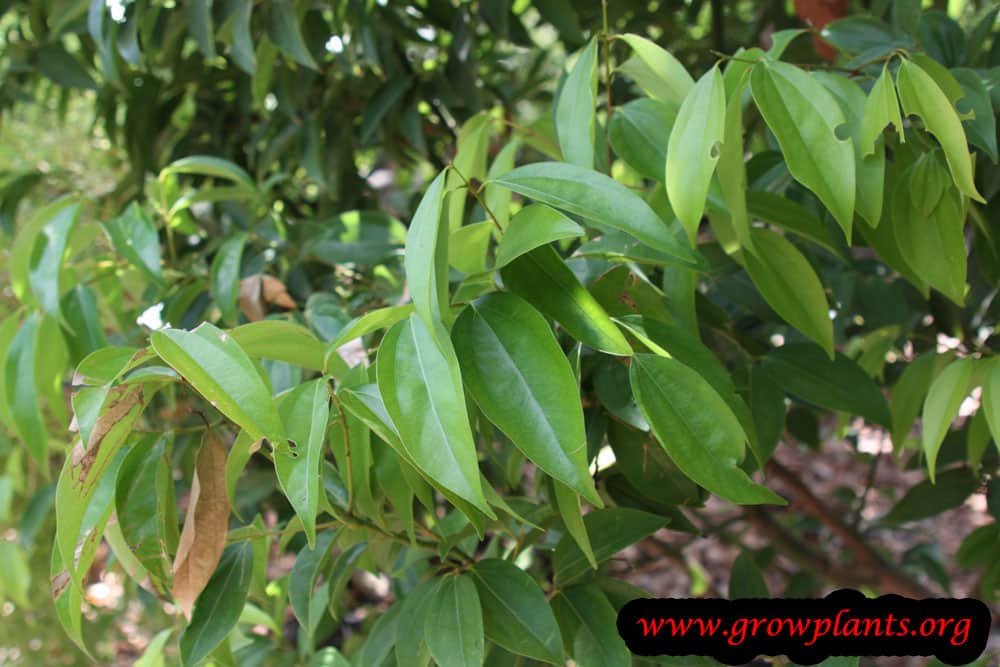
Categories
| Blooming Seasons |
|
|---|---|
| Edible Parts |
|
| Culinary uses |
|
| Flower colors |
|
| Climate |
|
| Harvest Season |
|
| Ornamental parts |
|
| Plant growing speed |
|
| Plant life-form |
|
| Plant Uses |
|
| Planting Season |
|
| Plants sun exposure |
|
| Watering plants |
|
| Hardiness zone |
|


